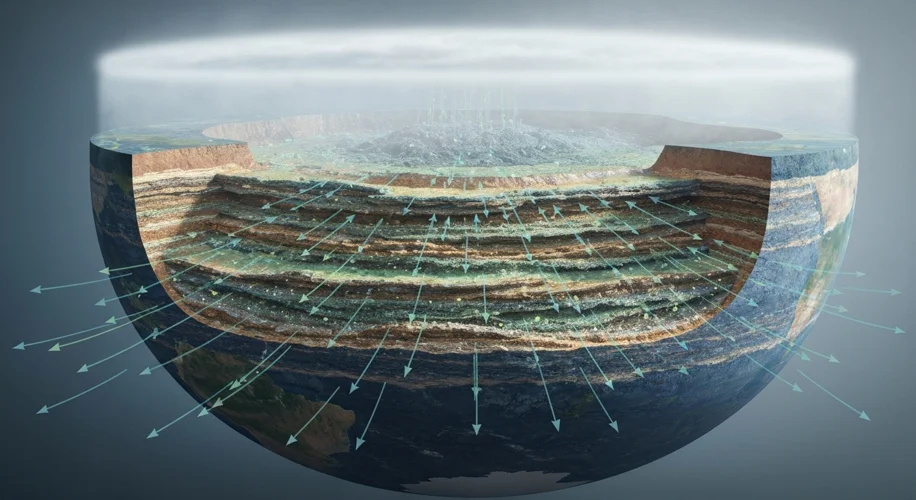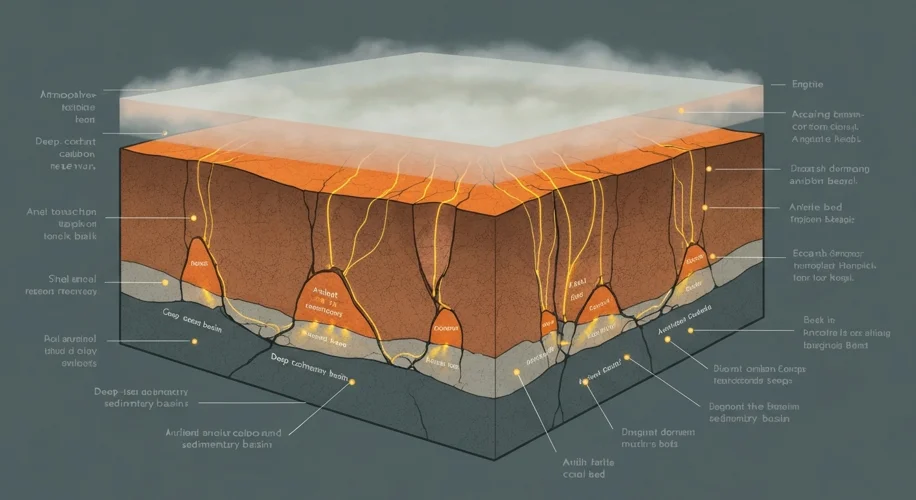Imagine peering back in time, not through dusty books or crumbling ruins, but through the very air we breathe. Scientists, in a discovery that’s sending ripples of concern through the scientific community, have found that our atmosphere is being infiltrated by something far older than human history – ancient carbon.
For millennia, vast stores of carbon have been locked away, hidden deep within the Earth’s crust. This is not the carbon we associate with modern industrial emissions, the “new” carbon released from burning fossil fuels. Instead, this is primordial carbon, carbon that was sequestered hundreds of thousands, even millions, of years ago. Think of it as Earth’s ancient breath, trapped for eons, now being released.
The implications of this discovery are, as one leading researcher put it, “potentially huge.” While the exact scale and mechanisms are still under intense investigation, the fact that this ancient carbon is finding its way into our atmosphere suggests a deeper, more complex interaction between Earth’s geological processes and its climate than previously understood.

For generations, our understanding of atmospheric carbon has largely focused on the relatively recent impact of human activities. We’ve grappled with the consequences of burning coal, oil, and natural gas – the carbon released from fossil fuels formed from ancient organic matter. However, this new finding points to a source that predates even those sources, a carbon reserve that was thought to be largely inert and disconnected from the active carbon cycle.
How is this ancient carbon escaping? Scientists are exploring several possibilities. One theory involves deep geological fault lines and volcanic activity, where tectonic shifts could be creating pathways for this ancient carbon to migrate upwards. Another area of research is focusing on the role of certain microbial communities deep within the Earth’s crust, which might be metabolizing these ancient carbon stores and releasing them as gases like methane or carbon dioxide.
This discovery doesn’t negate the critical importance of addressing human-caused carbon emissions. The impact of modern fossil fuel combustion remains the most pressing and immediate threat to our climate. However, understanding this newly identified source of ancient carbon adds a significant layer of complexity to climate modeling and future predictions.
If ancient carbon is indeed leaking into the atmosphere at a significant rate, it could mean that the Earth’s natural carbon cycle is more dynamic and perhaps more sensitive than we’ve accounted for. It raises questions about how these deep geological processes might interact with or even exacerbate the effects of human-induced warming. Could warming temperatures themselves, driven by our emissions, be unlocking these ancient carbon reservoirs?
The scientists involved are cautious but firm: more research is desperately needed. “We are essentially opening a new chapter in our understanding of Earth’s carbon system,” stated Dr. Aris Thorne, a geochemist at the forefront of this research. “The immediate concern is to quantify the volume and rate of this release. Only then can we truly assess its contribution to atmospheric changes and its ‘potentially huge implications’ for our planet’s future.”
This isn’t just a story about gases and geology; it’s a narrative about our planet’s hidden processes and the ever-evolving quest to understand the forces that shape our world. As we continue to monitor our atmosphere, we must also keep an eye on the deep, ancient secrets the Earth itself is beginning to reveal.

